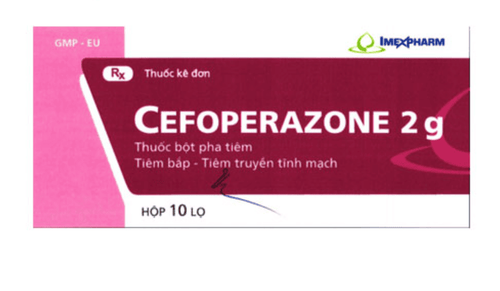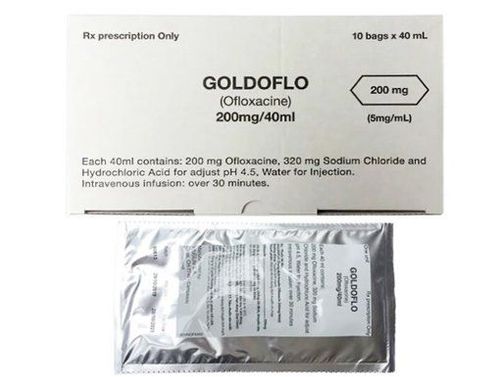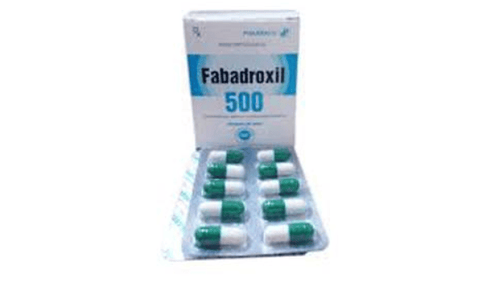This is an automatically translated article.
Plenmoxi medicine has the main active ingredient Moxifloxacin HCl and other excipients. This is an antibiotic with anti-parasitic, anti-bacterial, anti-viral, anti-fungal effects. The drug is prepared in the form of an injectable solution that is used in the treatment of diseases such as pneumonia, sinusitis, bronchitis.
1. What is Plenmoxi?
Plenmoxi medicine has the main active ingredient Moxifloxacin HCl 400mg and other excipients. This is an antibiotic with anti-parasitic, anti-bacterial, anti-viral, anti-fungal effects. The drug is prepared in the form of a solution for injection, the box includes 1 bottle with a capacity of 100ml. Plenmoxi drug is used in the treatment of diseases such as pneumonia, sinusitis, bronchitis. Moxifloxacin is a synthetic antibiotic belonging to the Fluoroquinolone group of antibiotics. Similar to other fluoroquinolones, moxifloxacin is bactericidal against both Gram-positive and Gram-negative bacteria.
2. What is the effect of Plenmoxi?
Plenmoxi drug is indicated for use in the treatment of diseases as follows:
Treatment of symptoms related to bacterial infections in the respiratory tract manifested in diseases such as pneumonia, sinusitis, bronchitis. Treatment of bacterial infections on the surface of the skin or subcutaneous tissues.
3. Usage and dosage of the drug Plenmoxi
3.1. Dosage of the drug Plenmoxi Administration of the drug Plenmoxi is closed as a solution for injection performed by deep intramuscular injection or intravenous infusion. The average course of treatment lasts about 7 to 14 days. Dosage: every day patients receive 1 bottle of 100ml equivalent to 400mg of active ingredient Moxifloxacin. For different cases of severe or mild disease, the dose can be adjusted differently to have the best treatment effect. Note: The above treatment dose is for reference only, you can consult your treating doctor for further advice.
3.2. How to use Plenmoxi Intravenous infusion of Plenmoxi drug is difficult and potentially risky for users, so you need to perform the infusion by qualified medical staff.
3.3. Management of missed/overdose In case of missed dose: If you miss a dose, you should try to use it as soon as possible. However, if it is almost time for your next dose, you should skip the missed dose and take your next dose at the scheduled time. Note that you should not use the drug with double the prescribed therapeutic dose. In case of overdose: In case of emergency, you need to take the person who overdosed on the drug to medical facilities for timely and proper treatment.
4. Undesirable effects of the drug Plenmoxi
In clinical trials with the active ingredient moxifloxacin, the majority of adverse events were mild to moderate.
Common unwanted effects when using Plenmoxi:
Whole body: abdominal pain, headache. For the digestive system: nausea, diarrhea, vomiting, dyspepsia, abnormalities in liver function test indicators. For the senses: taste disturbance. For the nervous system: causing dizziness, dizziness. Uncommon side effects when using Plenmoxi:
Systemic: asthenia, Candida infection, back pain, fatigue, abnormality in laboratory parameters, chest pain, allergic reaction, pain foot. For the cardiovascular system: tachycardia, peripheral edema, high blood pressure, palpitations. For the digestive system: dry mouth, nausea and vomiting, flatulence, constipation, oral candidiasis, anorexia, stomatitis, gastrointestinal disorders, glossitis. For the blood and lymphatic system: decrease in white blood cell count, decrease in prothrombin, increase in eosinophils, thrombocytopenia, thrombocytopenia, anemia. For metabolism and nutrition: increased amylase. For musculoskeletal system: joint pain, muscle pain. For the nervous system: insomnia, dizziness, restlessness, somnolence, anxiety, tremors, paresthesia, emotional confusion or depression. For skin and appendages: rash, itching, profuse sweating, urticaria. For the genitourinary system: vaginal candidiasis or vaginitis.
5. Interactions of Plenmoxi
Drug interactions during treatment with Plenmoxi 400mg/100ml is completely possible, you need to be aware of interactions with antacids, multivitamins... To minimize the risks You need to take the initiative to inform your treating doctor about all the medicinal products you are taking.
Foods and dairy products: The absorption of moxifloxacin is not altered when taken with food. Therefore, moxifloxacin can be used regardless of the meal. Ranitidine: Concomitant administration of Plenmoxi with ranitidine did not significantly alter the absorption of moxifloxacin. Antacids, Minerals and Multivitamins: Co-administration of Plenmoxi with antacids, minerals and multivitamins may decrease drug absorption. Therefore, antacids, antiretrovirals and other preparations containing magnesium, aluminum and other minerals such as iron should be taken at least 4 hours before or 2 hours after taking Plenmoxi. Warfarin: At present, no drug interactions have been reported when plenmoxi is co-administered with warfarin on coagulation time and other coagulation parameters. Digoxin: The pharmacokinetics of digoxin are not significantly affected by Plenmoxi (and vice versa). Probenecid: In a clinical study investigating the effect of the active ingredient Probenecid on renal excretion, there was no significant effect on the systemic and renal clearance of Plenmoxi. Therefore, there is no need to adjust the therapeutic dose when the two drugs are used concurrently. Risk of photosensitization: Plenmoxi phototoxicity has been reported with other quinolones. However, a study in human volunteers concluded that Plenmoxi had no potential for phototoxicity.
6. Some notes when using Plenmoxi
6.1. Contraindications of the drug Plenmoxi The drug Plenmoxi 5ml is contraindicated for use in the following cases:
Allergy to active ingredient Moxifloxacin (as active ingredient Moxifloxacin hydrochloride) 5mg or any ingredient in the preparation. Women who are pregnant or women who are breastfeeding. Persons under the age of 18. People with a history of liver disease or a history of treatment-related disorders with drugs of the Quinolone class. People with a history of prolonged QT interval or being treated with class IA, III antiarrhythmic drugs 6.2. Notes and cautions when using Plenmoxi carefully Check the integrity and clarity of the medicine bottle before infusion. The intravenous infusion of Plenmoxi 400mg/100ml may cause the risk of anaphylaxis for the user, it is necessary to carefully monitor this process. People with liver failure need to monitor liver function so that they can solve it promptly by changing the dose. Each time Plenmoxi is used, a full bottle of medicine should be infused, avoiding too much exercise during the infusion. Status epilepticus may occur during treatment with quinolones. Plenmoxi should be used with caution in individuals with known or suspected central nervous system conditions that may precipitate seizures or cause a lowering of the seizure threshold. 6.3. Use of Plenmoxi with pregnant or breastfeeding women Do not use Plenmoxi for pregnant and lactating women. If you have any questions during drug use, you need to contact your treating doctor or clinical pharmacist for the most accurate answer. 6.4. Use for driving vehicles and operating machines Caution when treating with Plenmoxi drug to drivers and operating machines. The active ingredient Plenmoxi is Moxifloxacin HCl and other excipients. This is an antibiotic with anti-parasitic, anti-bacterial, anti-viral, anti-fungal effects. To ensure the effectiveness of treatment and avoid side effects, patients need to take medicine according to prescription or consult a doctor, professional pharmacist.
Follow Vinmec International General Hospital website to get more health, nutrition and beauty information to protect the health of yourself and your loved ones in your family.
Please dial HOTLINE for more information or register for an appointment HERE. Download MyVinmec app to make appointments faster and to manage your bookings easily.













